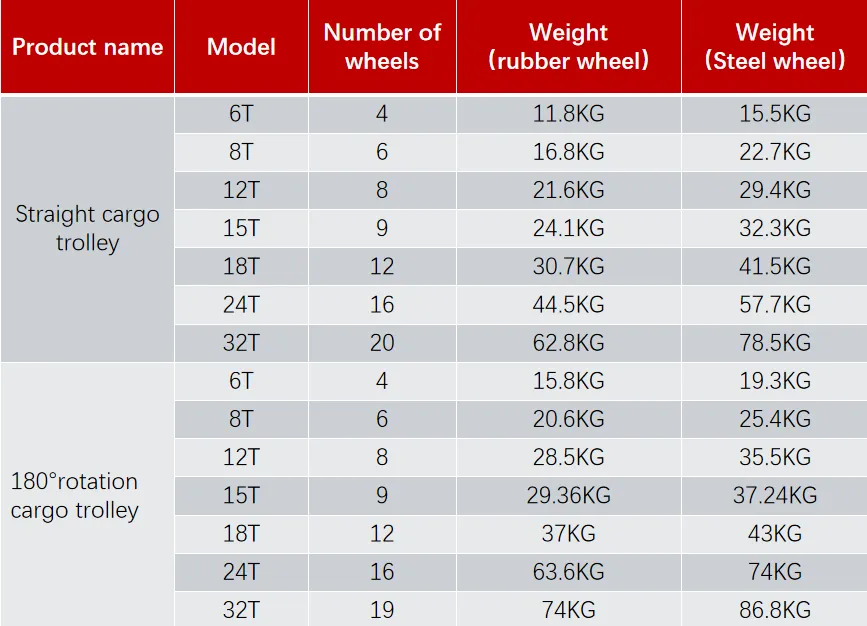1-ton Gantry Crane Specifications and Applications for Efficient Material Handling
Understanding the 1t Gantry Crane Applications, Features, and Benefits
Gantry cranes are essential tools in various industries, providing an efficient solution for lifting and moving heavy materials. Among the various configurations available, the 1-ton gantry crane stands out for its versatility and effectiveness in both indoor and outdoor applications. This article will delve into the features, uses, and advantages of the 1t gantry crane.
What is a Gantry Crane?
A gantry crane is a type of crane that consists of a frame that supports a moving bridge, which carries a hoist and a trolley. It is typically mounted on legs that run on tracks or wheels, allowing the crane to move horizontally across a workspace. The term gantry refers to the structure that provides the necessary height and stability for the crane to function effectively. While they come in various sizes, a 1-ton gantry crane is designed to lift loads up to 1,000 kilograms, making it suitable for a wide range of tasks.
Key Features of the 1t Gantry Crane
1. Load Capacity As the name suggests, the 1-ton gantry crane can safely lift and transport a maximum load of 1,000 kg. This makes it ideal for tasks involving moderate weights, such as maintenance, assembly, and installation tasks in manufacturing and construction sectors.
2. Adjustable Height Many 1t gantry cranes come with adjustable legs, allowing users to change the height according to their specific needs. This feature enhances the crane’s versatility, making it suitable for diverse applications.
3. Mobility Lightweight and often equipped with wheels, 1t gantry cranes can easily be moved from one location to another, providing flexibility in work environments. Some models allow for manual adjustments or powered movement, further enhancing mobility.
4. Ease of Assembly 1-ton gantry cranes are generally designed for easy assembly and disassembly. This makes them convenient for temporary setups at construction sites or workshops where space may be limited.
5. Variety of Hoists They can be equipped with different types of hoists, including electric, manual, or pneumatic hoists, providing options for users based on their operational requirements.
Applications of the 1t Gantry Crane
1t gantry crane

The versatility of the 1t gantry crane allows it to be used across various sectors, including
- Manufacturing In factories, these cranes are used for lifting heavy machinery parts or assembling products on the production line.
- Construction They are often utilized for lifting structural elements, tools, and materials at construction sites, especially where space is constrained.
- Maintenance In workshops, a 1t gantry crane can assist in the maintenance of vehicles, equipment, and machinery by allowing easy access to components that need to be lifted or replaced.
- Warehousing These cranes help in moving heavy goods safely within warehouses, streamlining workflow and increasing efficiency.
Benefits of Using a 1t Gantry Crane
1. Improved Safety By providing a mechanical advantage, gantry cranes reduce the risk of injury associated with manual lifting, ensuring a safer work environment.
2. Increased Efficiency The ability to quickly move and lift heavy objects allows for improved productivity, as tasks can be completed more swiftly compared to manual handling.
3. Cost-Effective Solution Investing in a 1t gantry crane is often more economical than using larger cranes or hiring lifting services, particularly for businesses with regular but moderate lifting needs.
4. Space-Saving Design Unlike large cranes, a 1-ton gantry crane does not require extensive infrastructure or space, making it suitable for smaller operations.
In conclusion, the 1-ton gantry crane represents a practical and efficient option for various lifting tasks across multiple industries. Its combination of load capacity, mobility, and adaptability makes it an invaluable tool for enhancing productivity and safety in the workplace. As industries continue to evolve, the 1t gantry crane will undoubtedly remain a vital component of modern lifting solutions.
-
4000 lb Gantry Crane | Adjustable, Heavy-Duty Lifting SolutionsNewsAug.31,2025
-
Portable 2000 lb Gantry Crane | Heavy-Duty & AdjustableNewsAug.30,2025
-
Versatile Lifting Solutions with Gantry and Overhead CranesNewsAug.29,2025
-
The Versatile Mobile Gantry Crane SolutionNewsAug.29,2025
-
Reliable Movement with Heavy Machinery Skates and RollersNewsAug.29,2025
-
Reliable Lifting Performance with 2000 lb Gantry Crane and 2 Ton Overhead SystemsNewsAug.29,2025
-
Maximize Lifting Efficiency with PML Magnetic LiftersNewsAug.29,2025
